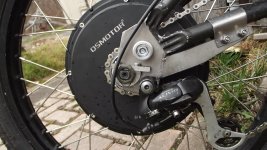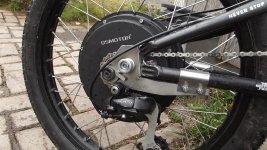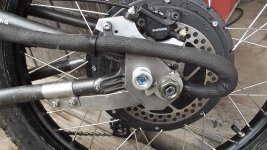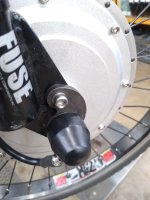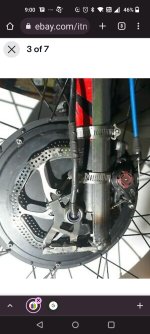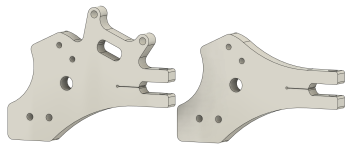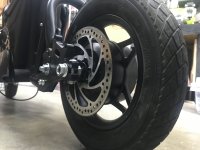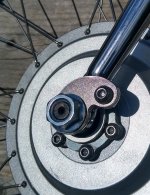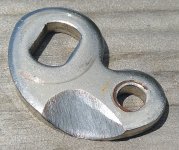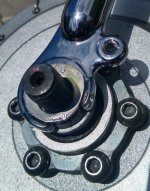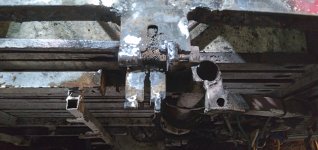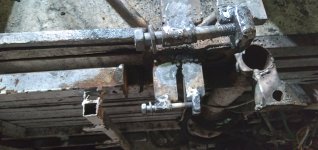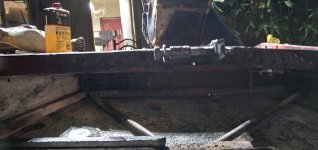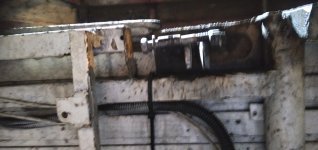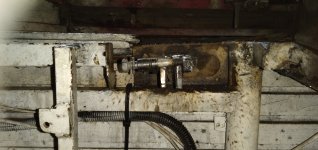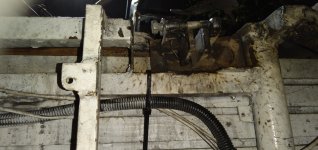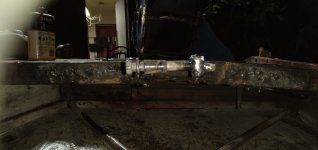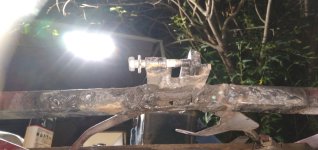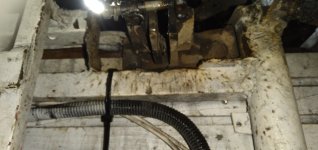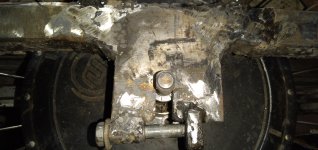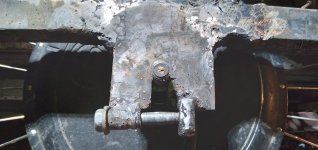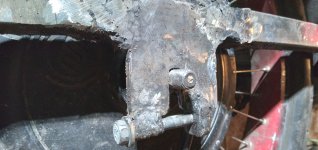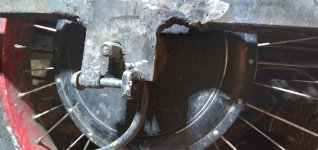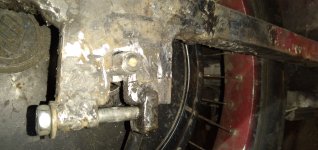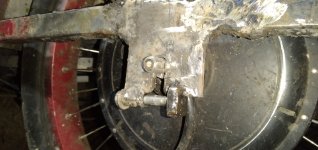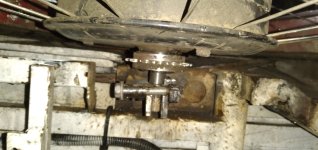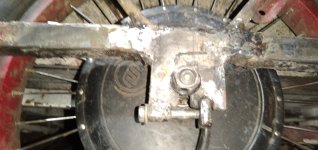spinningmagnets said:
Thankyou for the credit. I did want to post here: For I did spend some time, on this aspect of my project, and am invested in my bike greatly. Looking at what others have done is very helpful. I also used some of the aspects of the "Eleek" ebike's swingarm mounts for a guide.
I do want to say: there is ALOT of cool stuff in this thread if you like making things with your hands. ...many have great, great designs.
The req. were: I had a 135mm frame; I wanted to adapt a 150mm axle motor to: By extending slightly back, and down, with the stainless plates. Beginning with an open dropout 7005 aluminum frame ( Ironhorse Hollopoint)... I wanted a strong mooring with multiple points of contact that could take a load. I had run the 135mm axle motor for some time: and another Ebiker gave me those "U-Shaped" axle mounts, pieces cut by a laser.. I wanted to use them. I wanted pinch bolts, and to take up as much of the axle, outside of the motor, as I could.
Req:
-strong
-not to heavy ( Assy. is 3lbs total, 1/10 of the weight of the motor),
-act as a Tq. arm, on both sides, in the needs of handling power, while repositioning the bikes axle.
-not corrode, be easy to lift the motor in and out: be easily " bolt on construction", long lasting.
-shouldered bolts securely in the sockets milled to receive them,
-not be able to " Drop out" by any means ( 360* of metal around the axle)( pegs and weldments preventing that).. Fail safes.
-Easy to build, weld, and drill/thread/bolt with the simple hand tools I have.
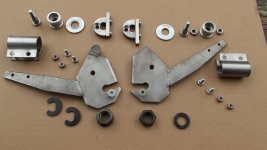
I certainly came first to study the designs others have put forth, here. I appreciate the history of others. Thanks for the reference. I can weld stainless easily at home, and do some rudimentary machining.
They ( the new axle mooring) have been tested, and seem to be working well. The 30 lb motor is almost twice the weight of the (bare) frame. I took a little adaptation for the chain to meet the freeweel correctly, and the 17T seems to have been a good choice for me. I still need to buy a good derailleur-mount tension-er, for I still have alot of suspension travel on the bike, and the front chainring is a three ring at the moment, pedals well. I might "form" another piece of custom stainless strapping for this purpose if I want to get rid of my derailleur placeholder, but because of the travel, and the assortment of rings, the bike has, I need the chain tension-er. .
Strictly a road traveling bike, now, given the constraints of the hub motors handling. I even have a little more room for a wider rear tire, now. Wheelbase has increased, 1" ( 25mm), fork angle has increased, 5*, ( from 19* to ~24*), trail is 3.65" (92mm). I will weld the pinch arm lever into place ( under the bobbins) once I have given the assembly a little more time to work itself into position. There are a couple of crucial plates welded on the back, inboard, that one cannot see, (a peg, and a triangle) to keep the motor from being able to move: They look great for a " bolt on" assy, and seem to be handling the load well.





![IMG_20200317_115321[2].jpg](/sphere/data/attachments/178/178418-03a5c0af3ffc8cdfa7dbd25fcb18c84d.jpg)

